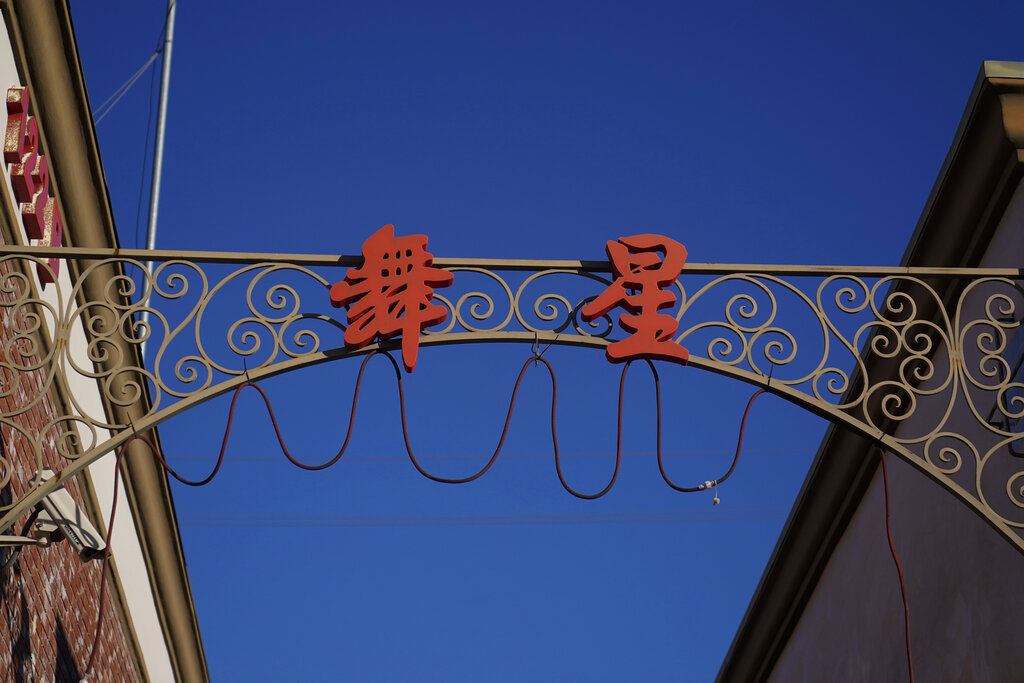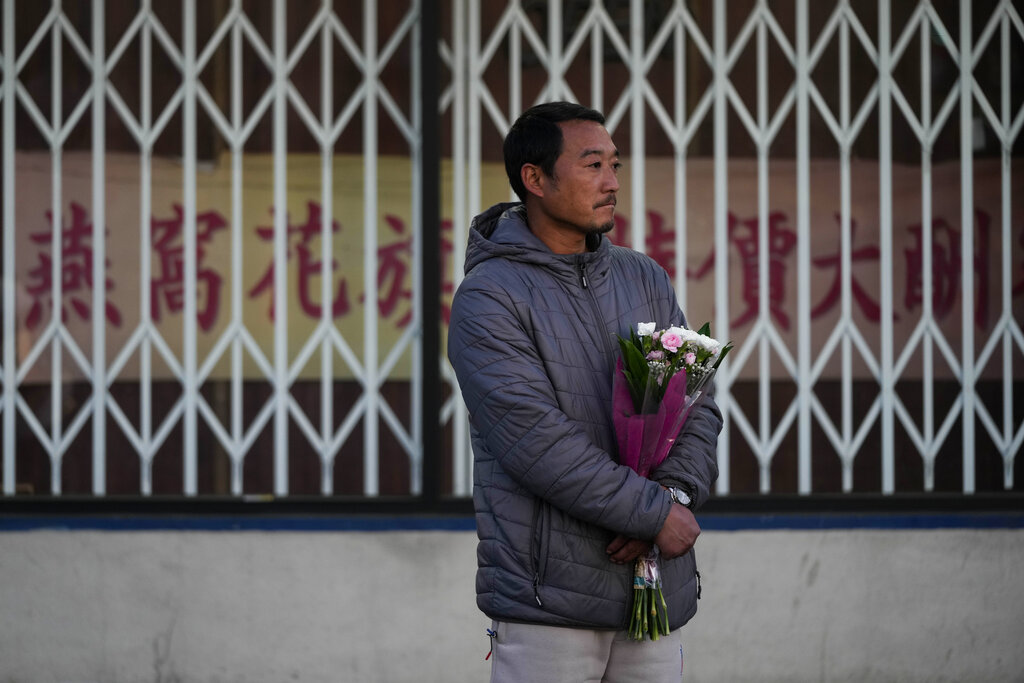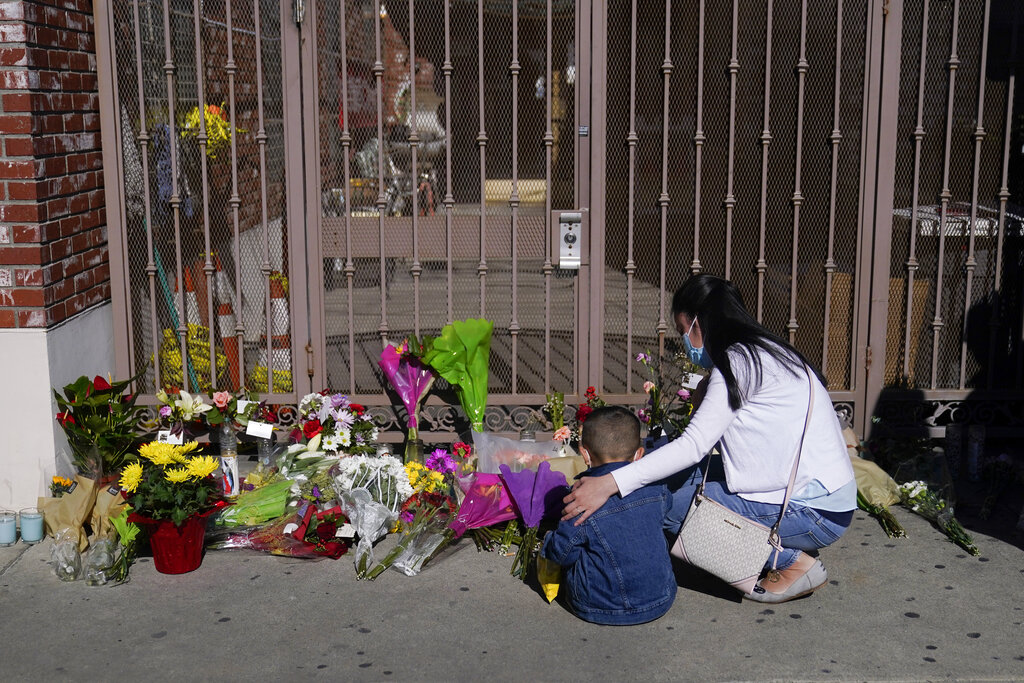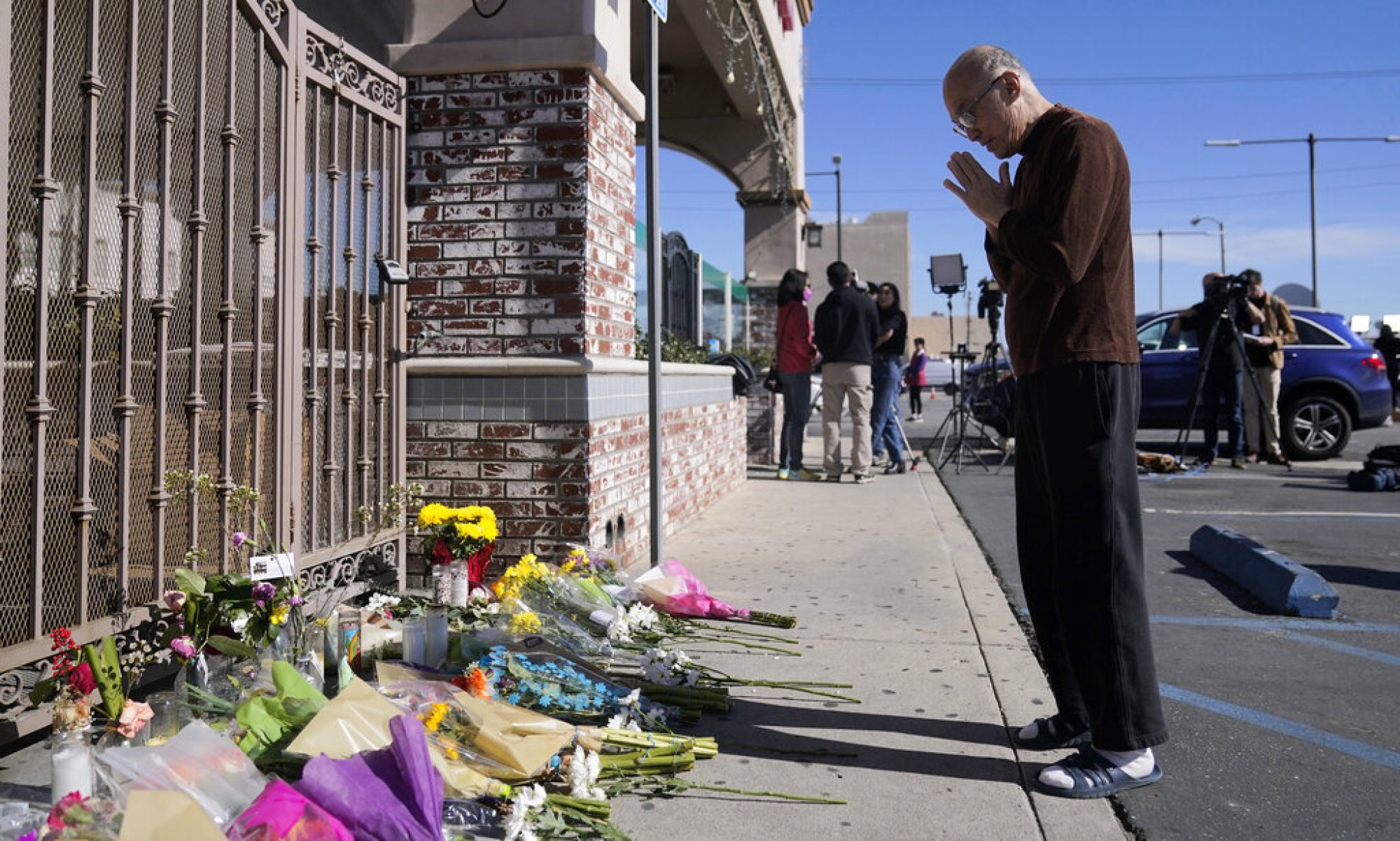Like many others, Leila Wu first heard about the Monterey Park mass shooting when headlines first started filtering through her Twitter feed. Then, she saw reputable journalism outlets across the country confirm the reports. After letting the initial wave of shock pass through, the tragedy hit close to home for her.
Monterey Park became the first city in America’s mainland to have a majority Asian population in 1990. According to the latest census in 2020, Asians made up 65% of the population in the town. Wu, who is Chinese American, was born and raised in neighboring San Gabriel, and frequented the stores and restaurants in Monterey Park often.
Currently, Wu is a student at Pasadena City College, just about a 15 minute drive from Monterey Park. She also volunteers as a conflict resolution specialist for the Asian Pacific American Dispute Resolution Center, where she works with Asians throughout Los Angeles to resolve legal and civil disputes. Having grown up in the Asian community, and now giving back to it, she feels an intensely close connection to the people and establishments she’s been around her whole life.
“I was really shocked because we’re such a small community,” Wu said. “Monterey Park is a community of predominantly Asian elders, so you would never expect something to happen here. It broke a lot of the security and the feeling of community we had.”
The shooting occurred on January 23, the night before Lunar New Year, at the Star Dance Ballroom, where a gunman killed 11 people and injured nine others. The shooter later drove to another ballroom in neighboring Alhambra to continue his rampage, but was physically stopped and disarmed there.
At first, Wu reckoned that the tragedy was a hate crime. She felt that targeting ballrooms, a niche but representative part of the Asian experience in America, was a sign that the shooting specifically targeted the Asian community.
However, in the days following the shooting, reporting about the perpetrator and possible motives trickled out, detailing the shooter as 72-year-old Huu Can Tran. The Los Angeles Times reported that Tran was an Asian immigrant who became a naturalized citizen in the 1990s. He was a frequent patron of the Star Dance Ballroom, and supposedly had a falling-out with a woman who also danced at the ballroom, which made him “jealous.” A neighbor described him as an erratic person, and law enforcement said he had emotional problems that worsened the weeks before the shooting.

Wu expressed that the community felt “a lot of shock” when the identity of the shooter was revealed.
“Honestly, it felt like a kind of betrayal because it was a community member who did this against his own community,” she said.
Mass shootings are a uniquely American phenomenon, an issue that has been debated and discoursed repeatedly, seemingly without resolution. When a tragedy like the one Monterey Park happens, the issue of gun control becomes salient yet again. And violence against the Asian community, due to the coverage of anti-Asian hate crimes during the pandemic, has become sublimated into mainstream media coverage.
But the Monterey Park tragedy added layers to the typical coverage of mass shootings. This was new –– an elderly Asian targeted members of his own community. And while the suspect didn’t have a manifesto or posted troubling posts on social media, he clearly showed signs of suffering from mental illness.
In mainstream knowledge, the Monterey Park shooting seemed like a new phenomenon, a new twist to the disease of gun violence which plagues America. However, the issue of mental health has consistently been a problem in the Asian American community, and has been historically stigmatized within the community and underrepresented in popular media. Within Asian enclaves, mental illness is very prevalent; its causes are cultural and structural, and solutions to better this issue are complex and nuanced.
The state of mental health in the Asian community
Ruth Chung realizes that it may come off callous, but shares that the Monterey Park shooting “in the best way, normalizes Asians as like everyone else.”
“Like we have crazy people too. And we have frustrated people too,” she added. “I’m also like, oh, we’re not immune from this. [Mass shootings] are also affecting us.”
In this way, Dr. Chung, a professor of educational psychology and Asian intergenerational conflict at USC, sees a silver lining coming out of the tragedy. It offers the opportunity to shine a light on mental health in the Asian community, bringing awareness to it to a national audience.
While Chung cautions against blaming culture entirely, she feels that it was undoubtedly an “enhancing factor” as a cause for the shooting, along with the lack of regulations on assault weapons.
“Asian Americans in general are taught to deal with emotions, and especially Asian males on top of that, are doubly dosed with this: Keep it all inside and not let it show,” she said.
These sentiments are rooted in neo-Confucian, collectivist ideals that have formed the backbone of East Asian cultures, Chung notes.
“Like we have crazy people too. And we have frustrated people too. I’m also like, oh, we’re not immune from this. [Mass shootings] are also affecting us.”
Ruth Chung, USC professor of Asian intergenerational conflict
“In terms of the origins of this issue –– coping with mental health –– I do see the biggest barrier is our neo-Confucian attitudes towards emotions as being negative. Strong emotions are seen as a disrupter of harmony and balance,” she said. “So everyone’s expected to bottle [emotions] up, swallow it, suppress it, deny it, pretend nothing’s going on. And that’s how we keep the peace.”
Data on mental health and mental illness in the Asian community, at best, paints an incomplete picture. Surveys typically ask users to self-report symptoms of mental illness, and given these cultural barriers, Asian Americans are more likely to underreport them.
According to data from the Substance Abuse and Mental Health Services Administration (SAMHSA), nearly 15% of the Asian American Pacific Islander population reported having a mental illness in 2018.
The organization also observed a rise in mental illness in younger Asian Americans. Among the AAPI population aged 18-25, the rate of “serious mental illness” nearly doubled from 2008 to 2018.
However, due to the limitations of quantitatively measuring mental health, it’s unclear whether this measure shows the Asian population has legitimately faced more bouts of mental illness, or whether the community has become more open to acknowledging it. SAMHSA notes that “knowledge of mental health needs and attitudes of Asian Americans regarding mental illness is limited,” particularly among those who have limited English skills.
In Wu’s experience, many elderly Asians she’s worked with simply don’t have the language to associate certain feelings to mental health issues. For example, she notes that there’s not a direct translation for certain words associated with mental health in Mandarin, such as trauma.
“They will get confused and they won’t know what you’re talking about. They’ll be like, ‘I don’t have any trauma. What is that? I just need to go outside and take a walk,’” Wu said.
Chung acknowledges that talking about the role of culture in a community is a tricky subject; these beliefs are developed over thousands of years and aren’t easily changed. Additionally, she feels that blaming Asian culture may be misconstrued as a way to invalidate these cultural beliefs, which can be a slippery slope.
Nevertheless, she feels that it’s important that the Asian community challenge themselves to better deal and process emotions.
“I think there’s an inaccurate understanding of the role of emotions. I think that’s a huge factor in our mental health issues, both in the development of the problem itself, as well as how we cope or not cope with it,” Chung said.
While she hopes the Asian community can become more introspective about dealing with mental illness, Chung notes that social expectations of Asian Americans also contribute to these issues.

Perhaps the greatest surprise of the Monterey Park tragedy was that the shooter was an elderly Asian male, an unlikely demographic to be a mass shooter. Chung observes that this perception stems from the “model minority” myth placed on Asian Americans.
Among other things, the “model minority” concept rewards and incentivizes Asians for being “docile, compliant and not speaking out,” Chung said. Over time, these values became essentialized as part of the Asian American identity by American society at large.
The Monterey Park shooting “was a wakeup call” to “challenge and undermine the model minority stereotype,” Chung said.
Making space for Asian Americans in therapy
Among those suffering from mental illness, Asian Americans were far less likely to receive mental health services compared to other racial and ethnic demographics. According to the American Psychiatric Association, only 20% of Asians with mental health issues received treatment, compared to about 30% of Latino and Black Americans and 48% of whites in 2017.
Myron Quon, who is currently the executive director of Pacific Asian Counseling Services (PACS) in Los Angeles, has worked in Asian behavioral health and mental wellness spaces for more than a decade. He observes that there are myriad structural and ideological reasons for why Asians are less likely to seek mental health support, but ultimately, it comes down to the lack of Asian American mental health workers, and counselors who understand and empathize with the Asian American experience.
His work at PACS seeks to create a support network for low-income Asian Angelenos by providing individual and community resources, such as therapy services and educational manuals for navigating assimilation into American society. But organizations like PACS, which operates as a nonprofit, are rare.
Quon was recruited for PACS’ executive director position because, in his words, he was someone “who knew L.A. really well,” understood mental health issues and has had extensive experience working with the Asian community. The people who check off all these boxes, Quon said, are few and far between.
Part of this can be attributed to the patterns of acculturation within the Asian community, Quon observes. Asian households, particularly immigrants, promote job-seeking values that emphasize financial stability. Since many mental health outfits operate as nonprofits, Asians turn away from it in favor of more lucrative professions.
And even for Asians who pursue a career in mental health work, they encounter a “bamboo ceiling,” a social phenomenon across all industries which finds that Asian Americans are less likely to achieve executive, high-ranking positions in their work.
In Quon’s experience, the main demographic of mental health workers in Los Angeles are white, cisgender, heterosexual women. The dearth of Asian perspectives in this mental health space not only dissuades Asian Americans from seeking services, but also results in a lack of understanding of how mental illness uniquely affects the Asian community.
This is prevalent even in the most influential texts in the mental health space, such as the Diagnostic and Statistical Manual of Mental Disorders, or DSM-5, the taxonomic and diagnostic tool published and updated by the American Psychiatric Association –– the “bible” for anyone working in this field, Quon said.
“For non-acculturated [Asians], it’s like, ‘Oh, my stomach hurts, my heart hurts, my head hurts. This doesn’t feel well here. My body doesn’t feel well.’ That is depression or anxiety, but that’s not how the DSM-5 diagnoses it,” Quon said.
On a more localized level, Quon observes that the lack of Asian counseling perspectives leads to ineffective, or even insensitive practices.
The Western model of counseling asks patients to set boundaries and separate themselves from their families. Quon notes that this practice “does not work for Asian American younger people, because a lot of them grow up seeing the world as a family interconnected.”
This consciousness toward collectivism is also a central focus to Asian Mental Health Collective, a nonprofit organization which provides therapy services for Asian individuals.
“As members of the Asian diaspora, there are often strong cultural underpinnings related to our mental health experiences that go unaddressed. Mental health issues do not exist in individuals only, and this is especially true for those who come from cultures that value collectivism,” the organization said.
“Experiences shaped by cultural ideals that value achievement and filial piety are interwoven in the fabric of [Asians’] understanding of the world.”
A more conscious way of counseling Asian patients would ask: “How can we look at the family unit? How can we integrate what is going on with you, with your mom and dad, whoever your caregivers are?” Quon said. “Let’s explore the fact that you are an Asian person, and what that means for your family dynamics, before we go straight to boundaries.”

The outlook for mental health in the Asian community going forward
At PACS, Quon is discovering new, innovative ways to treat mental illness in the Asian community. Moving away from the traditional model of one-on-one talk therapy sessions, Quon is exploring doing more group sessions with physical activity involved.
“Talking to people about gardening, cooking, going to temple, meditating, breathing, mindfulness. Those are all practices that are there in some Asian communities that can really help a person do better,” Quon said.
His goal is to meet the Asian community where they are at, identify the salient cultural beliefs and behaviors and devise the best methods which incorporate them to treat mental illness.
As a veteran in the mental health space, he’s also elated to see younger Asian Americans become more involved in it, especially after the pandemic.
“I’m very happy to see a lot of Asian non-profits and younger Asian folks trying to create with what they have, which is limited resources, limited experience and training,” Quon said. “And I do believe that when I look at some of the younger, fresher Asian American groups trying to enter this space, I like how they’re approaching it very differently than us.”
[Elderly Asians] equate talking about these important issues with like, ‘Oh, you’re being Americanized. Like, you’re American. You should try to stay true to your Chinese roots. That’s not what Chinese people do.”
Leila Wu, 19-year-old Monterey Park resident
Wu fits this description –– a Gen-Z Asian who actively volunteers at an Asian nonprofit –– but she’s less optimistic about the progress of mental health in the Asian community. While she feels that younger generations of Asians are now much more aware of mental health issues, it’s a challenge educating older generations of its importance.
“Being from a younger generation, the vocabulary to speak about these issues, it’s all in English. And I think the language barrier actually makes the generation gap even worse,” Wu said.
This language barrier and generation gap creates cultural conflicts between younger and older Asians. Mental health is perceived as an “American” value, distanced from one’s Asian roots.
“[Elderly Asians] equate talking about these important issues with like, ‘Oh, you’re being Americanized. Like, you’re American. You should try to stay true to your Chinese roots. That’s not what Chinese people do,’” Wu said.
While the outlook on mental health and treatment in the Asian community remains murky, the hope is that the Monterey Park tragedy will become an inflection point for the Asian community and American society at large to take this issue seriously. There are no concrete answers or one-fix solution to the issue.
The first step, Quon said, is to be able to discuss Asian mental health “in a much more sophisticated, structured” manner than we do now.
